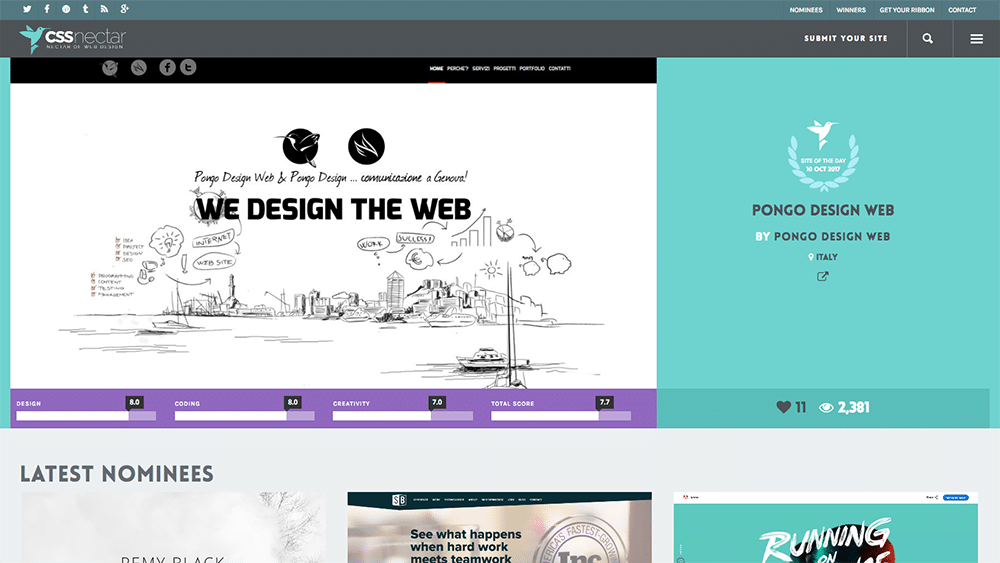Discover the Latest Trends in Website Design in copyright for 2024
Discover the Latest Trends in Website Design in copyright for 2024
Blog Article
Necessary Tips for Crafting High-Impact Web Site Designs
In the realm of digital advertising and marketing, the design of a site serves as a crucial touchpoint for involving possible customers. To create high-impact site styles, one should think about necessary aspects such as target market understanding, user experience, and aesthetic pecking order.
Understand Your Audience
Understanding your target market is basic to efficient web site style. A website that resonates with its visitors is often the outcome of detailed research study and understandings into customer demographics, actions, and choices. Determining target customers enables developers to customize web content, visuals, and performances that satisfy their particular demands, boosting engagement and complete satisfaction.
To effectively comprehend your target market, begin by performing market analyses to gather information on age, gender, location, and interests. This details functions as a foundation for producing user characters, which represent the crucial qualities of your target market. These characters guide decision-making in style elements and web content strategy, guaranteeing alignment with individual expectations.
Furthermore, evaluating customer behavior through devices like Google Analytics can expose exactly how site visitors interact with your site. Metrics such as bounce prices and time on page can highlight locations that require enhancement or change. User surveys and comments additionally provide very useful insights into preferences and discomfort factors.
Eventually, a deep understanding of your target market is not merely useful however essential. It empowers developers to produce even more pertinent, enticing, and useful websites that cultivate a favorable individual experience and drive preferred results.
Prioritize Individual Experience
When developing a website, focusing on customer experience (UX) is vital to accomplishing both individual contentment and company objectives. A well-crafted UX makes certain that visitors can browse the website easily, find the details they need, and engage with material efficiently. To achieve this, it is crucial to embrace a user-centered layout technique that involves understanding individual needs, preferences, and habits.
Begin by conducting complete research, including individual surveys and functionality testing, to collect insights right into exactly how customers interact with your site. This data must notify style choices, ensuring that formats and attributes align with customer expectations. Structured navigation is vital; visitors must have the ability to situate information swiftly without unneeded clicks or complication.

Last but not least, make certain that your web site comes to all customers, consisting of those with handicaps. Complying with accessibility standards not only expands your target market but likewise cultivates inclusivity. By prioritizing UX, you lay the foundation for an effective web site that satisfies both user needs and service goals.
Embrace Visual Hierarchy
A well-structured visual pecking order plays a substantial function in improving customer experience by guiding visitors' focus to the most important aspects of an internet site. By strategically arranging web content, developers can create a clear course for customers to adhere to, guaranteeing they involve with vital details effectively.

In addition, the placement of aspects on the page is critical. Leading the visitor's stare with the layout can be attained by positioning vital information on top or in the center, where customers generally start their visual journey. Integrating whitespace around elements can additionally enhance clearness, making it less complicated for individuals to refine details without feeling bewildered.
Last but not least, utilizing typography properly adds to visual pecking order. Different font designs, weights, and dimensions can denote significance, assisting customers through the material perfectly. By embracing these principles, designers can produce an user-friendly experience that promotes interaction and motivates customers to discover additionally.
Optimize for Mobile
Mobile optimization is essential in today's electronic landscape, as a substantial section of internet traffic comes from smart phones. To make certain a seamless user experience, websites must be created with mobile customers in mind. This entails using receptive internet design strategies that adjust the layout, images, and text to fit various display sizes while keeping functionality and visual appeals.
First, prioritize filling rate, as mobile customers frequently run on slower networks. Lessen and maximize photos code to improve performance. Additionally, navigation needs to be user-friendly; take into consideration applying a streamlined food selection that allows easy accessibility to essential pages without frustrating customers.
Touch targets, such as buttons and links, should be properly sized, ensuring they are quickly tappable without mistakes. Make certain that kinds are mobile-friendly by lessening input fields and using dropdowns where suitable, simplifying the individual experience.
Last but not least, test your site across different smart phones and browsers to recognize any issues that might influence functionality. By focusing on mobile optimization, you not just improve user fulfillment yet additionally positively impact your site's search engine position, hence drawing in more site visitors and boosting general engagement.
Implement Strong Branding
A well-defined brand name not just separates you from competitors yet likewise promotes count on and commitment amongst your audience. This identification needs to be shown regularly across all go to these guys electronic touchpoints, including your website, social media, and e-mail interactions.
Aesthetic elements such as logo designs, color pattern, and typography play a vital duty in branding. Select a shade combination that resonates with your target market and shows your brand personality. Make sure that your logo design is versatile and plainly presented on your website, enhancing brand name recognition.
Material is equally crucial; your intonation should line up with see here your brand name identity, whether it's expert, friendly, or authoritative. Involving storytelling can additionally strengthen your brand, developing a psychological link with individuals.
Conclusion
In verdict, crafting high-impact website styles demands a diverse method that includes recognizing the audience, prioritizing individual experience, and accepting visual power structure. By incorporating these aspects, internet sites can effectively involve individuals, assist in seamless navigating, and foster psychological connections that improve brand name identification.
To create high-impact web site layouts, one need to think about vital elements such as audience understanding, user experience, and aesthetic pecking order.When designing an internet site, focusing on customer experience (UX) is extremely important to accomplishing both user complete satisfaction and business purposes.Beginning by conducting comprehensive research, including user surveys and functionality testing, to collect understandings into how individuals engage with your site. To make certain a smooth customer experience, internet sites have blog to be designed with mobile customers in mind.In final thought, crafting high-impact website designs demands a diverse technique that includes recognizing the audience, prioritizing individual experience, and embracing visual pecking order.
Report this page